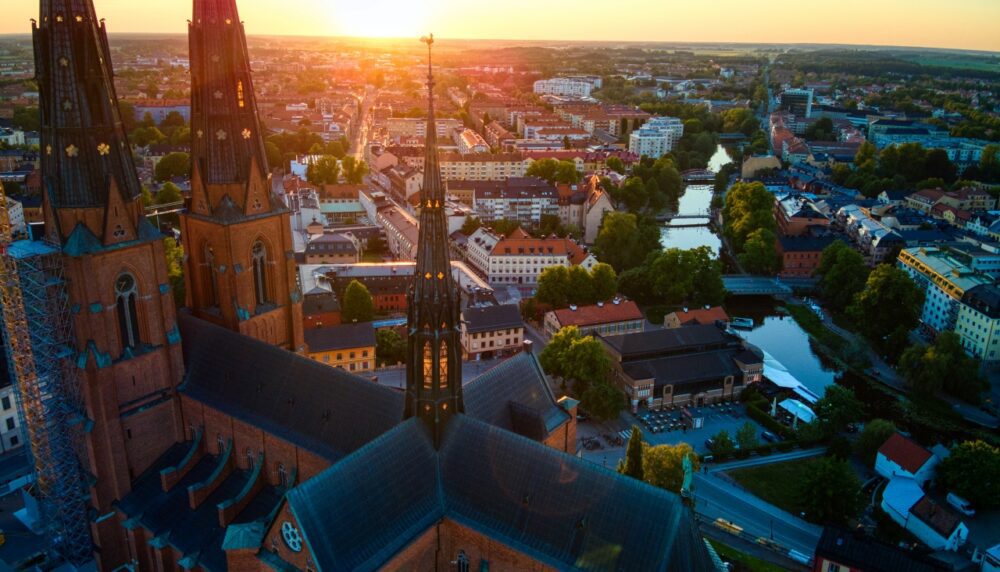
Uppsala, Sweden’s historic university city, is a charming destination that blends academic prestige with a rich cultural heritage. Just a short train ride from Stockholm, this city is known for its stunning cathedral, Viking history, and vibrant student life. Whether you’re exploring the majestic Uppsala Cathedral, walking through the ancient burial mounds of Gamla Uppsala, or relaxing in its picturesque parks, Uppsala offers a delightful mix of history and tranquillity. But with so many places to see in Sweden, you might wonder: is Uppsala worth visiting? In this post, we’ll dive into what makes Uppsala unique and help you decide if it’s the right addition to your itinerary.
Table of Contents
Pros – Reasons You Should Visit Uppsala
1. Uppsala Cathedral
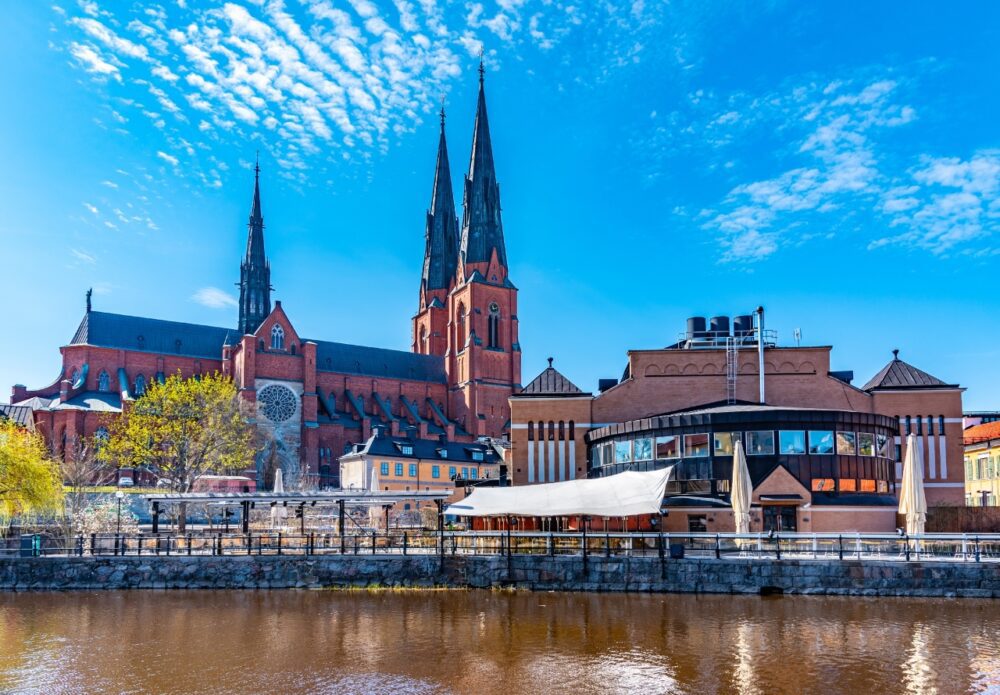
Uppsala’s Domkyrka is the largest cathedral in Scandinavia and a must-visit for its architectural grandeur and historical significance. Built in the 13th century, the Gothic structure houses the tombs of Swedish royalty, including King Gustav Vasa, and famed scientist Carl Linnaeus.
Stepping inside, I was struck by the soaring ceilings, intricate stained glass, and a palpable sense of history. The cathedral often hosts concerts, adding a layer of cultural richness to your visit. Its central location in the heart of Uppsala makes it easy to include in your itinerary, and guided tours provide fascinating insights into Sweden’s religious and political history.
2. The Legacy of Carl Linnaeus
Uppsala is the birthplace of Carl Linnaeus, the father of modern taxonomy, and the city pays homage to his legacy with attractions like the Linnaeus Garden and Linnaeus Museum. The garden, a meticulously recreated 18th-century botanical garden, showcases plants that Linnaeus himself studied and classified.
Wandering through the garden, I was amazed by its beauty and historical significance. The museum, housed in Linnaeus’s former home, provides a deeper understanding of his work and life. If you’re a nature or science enthusiast, exploring these sites offers a unique connection to one of history’s greatest botanists.
3. Uppsala University
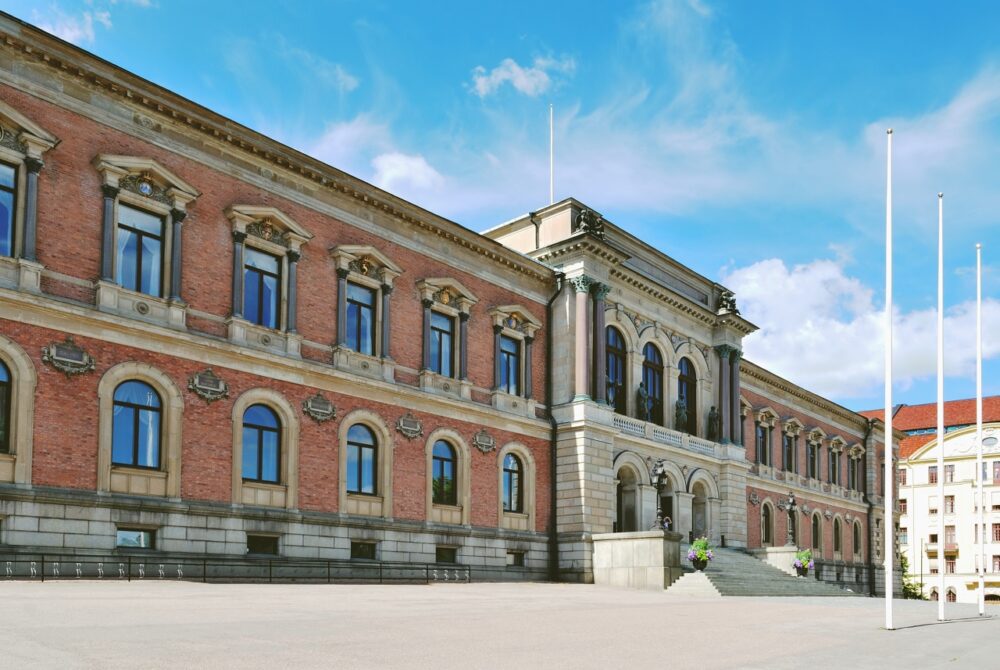
Founded in 1477, Uppsala University is the oldest university in Sweden and a cornerstone of the city’s identity. Its historic buildings, like the Carolina Rediviva Library, which houses the famous Silver Bible, are architectural gems worth visiting.
During my visit, I toured the university grounds and felt the intellectual energy that defines Uppsala. The Gustavianum, the university’s oldest building, features an anatomical theatre and fascinating exhibits on Viking history and scientific advancements. Uppsala University is a hub of learning and culture, making it a must-see for visitors.
4. Gamla Uppsala (Old Uppsala)
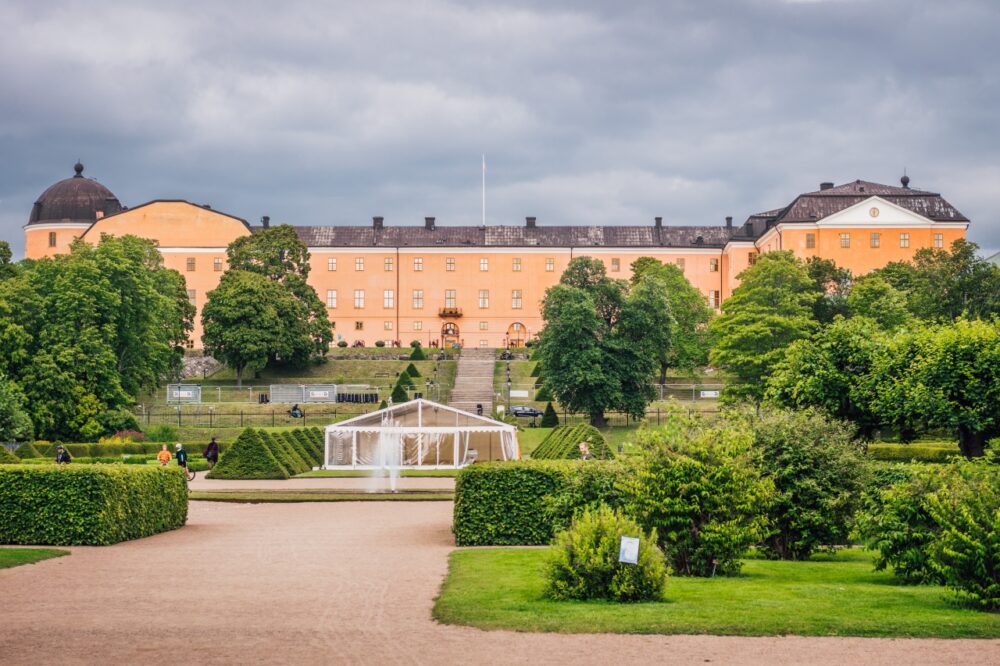
Gamla Uppsala, a historic area just outside the city, is a treasure trove of Viking history. Its burial mounds, believed to be the resting places of ancient kings, are iconic symbols of Sweden’s pagan past. The Gamla Uppsala Museum offers insights into Viking culture and mythology.
Walking among the burial mounds, I felt a deep connection to Sweden’s ancient history. The area’s serene beauty and historical significance make it a compelling destination. Guided tours are available, but simply exploring the site at your own pace is equally rewarding.
5. Beautiful Parks and Green Spaces
Uppsala is a city of green spaces, perfect for relaxing or taking a leisurely walk. Botaniska Trädgården, Uppsala’s botanical garden, is a highlight, featuring vibrant flower beds, exotic plants, and a lovely orangery. Fyrisån River, which winds through the city, is another scenic spot for picnics and strolls.
Spending a sunny afternoon at the botanical garden was a highlight of my trip. The well-maintained grounds and peaceful atmosphere offered a refreshing escape from sightseeing. Uppsala’s green spaces are ideal for enjoying Sweden’s natural beauty, whether you’re visiting solo or with family.
6. Rich Cultural Scene
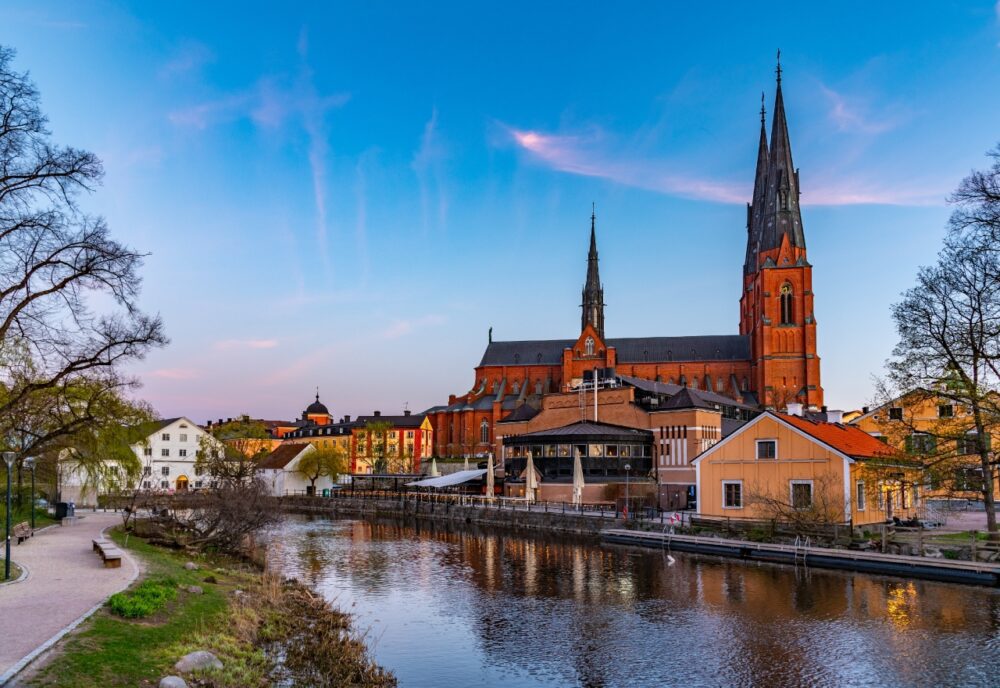
Uppsala’s cultural offerings include museums, music, and theatre. The Uppsala Art Museum, housed in a historic castle, showcases contemporary and classic works, while the Uppland Museum delves into the region’s history. The city’s lively student population ensures a vibrant arts scene.
I attended a concert at the Uppsala Konsert & Kongress, a modern venue that hosts everything from classical performances to pop acts. Uppsala’s cultural diversity means there’s always something happening, whether it’s an art exhibit, a local festival, or a theatre production.
7. A Compact and Walkable City
Uppsala’s compact layout makes it an incredibly walkable city, with most attractions within easy reach. Whether you’re exploring Gamla Uppsala, the cathedral, or the university, you’ll find that everything is conveniently connected by charming streets and scenic paths.
I loved wandering through Uppsala at my own pace, discovering hidden cafés and boutique shops along the way. Biking is another popular option, with dedicated lanes and rental services making it easy to get around. The city’s pedestrian-friendly design ensures a stress-free visit.
8. Thriving Café Culture
Uppsala’s café culture is second to none, with cosy spots perfect for enjoying a fika, Sweden’s beloved coffee and cake tradition. Cafés like Ofvandahls Hovkonditori, a historic favourite, and modern spots like Café Linne Hörnan offer excellent coffee, pastries, and warm atmospheres.
Stopping for a fika at a riverside café was one of my favourite moments in Uppsala. The city’s relaxed pace and friendly vibe make its cafés perfect for unwinding and people-watching. Don’t miss trying a kanelbulle (cinnamon bun) or a slice of Swedish princesstårta.
9. Proximity to Nature
Uppsala’s location makes it easy to explore Sweden’s natural beauty. Just outside the city, you’ll find tranquil forests, lakes, and hiking trails. Hågadalen-Nåsten Nature Reserve is a short distance away and offers picturesque landscapes perfect for outdoor activities.
I spent a morning hiking through the reserve, enjoying the peaceful surroundings and spotting local wildlife. Whether you’re into cycling, kayaking, or simply relaxing by a lake, Uppsala’s proximity to nature makes it a fantastic destination for outdoor enthusiasts.
10. Festivals and Events
Uppsala hosts several unique festivals and events throughout the year, adding vibrancy to the city’s calendar. The Walpurgis Night (Valborg) celebration in April is particularly famous, with bonfires, singing, and student-led festivities. The Uppsala Short Film Festival and Kulturnatten (Culture Night) are also highlights.
I visited during Valborg and loved the energetic atmosphere, with the whole city coming alive in celebration. These events showcase Uppsala’s community spirit and offer visitors a chance to experience Swedish traditions up close. If your visit coincides with a festival, you’re in for a treat.
Cons – Things You Should Consider When Visiting Uppsala
1. Limited Nightlife
While Uppsala has a vibrant student population, its nightlife can feel underwhelming compared to larger cities like Stockholm or Gothenburg. Bars and pubs, such as those in the student nations, tend to cater primarily to the university crowd, and many establishments close earlier than you might expect.
During my visit, I found the nightlife options friendly but somewhat subdued. Unless you’re part of the student scene, the options might feel limited, especially for those seeking lively clubs or late-night entertainment. If nightlife is a priority, you may want to pair your Uppsala trip with a visit to Stockholm, which is only a 40-minute train ride away.
2. Crowds at Major Attractions
Uppsala’s historic sites, such as the Cathedral, Linnaeus Garden, and Gamla Uppsala, can become crowded, especially during weekends, holidays, or peak tourist season in summer. The smaller size of these attractions can make the experience feel cramped when visitor numbers are high.
When I visited the Linnaeus Garden on a sunny weekend, the pathways felt crowded, making it harder to fully enjoy the serene atmosphere. To avoid the rush, plan your visits for early mornings or weekdays. Booking guided tours in advance can also help bypass the busiest times and enhance your experience.
3. Expensive Dining and Accommodation
Uppsala, like much of Sweden, can be expensive, particularly when it comes to dining out and staying overnight. Central hotels and restaurants near major attractions tend to charge premium prices, and budget options are relatively limited compared to larger cities.
I found that opting for casual meals at local cafés or grocery stores helped manage costs, but this isn’t always ideal for travellers looking for a more upscale dining experience. If you’re planning to visit Uppsala, consider staying in less central locations or exploring deals on accommodations and meals in advance to keep expenses in check.
4. Limited Public Transport Options
While Uppsala is compact and walkable, public transport options within the city are limited compared to Stockholm. Buses are reliable but infrequent outside peak hours, and some popular attractions, such as Gamla Uppsala, require careful planning to reach via public transit.
During my trip, getting to Gamla Uppsala by bus required some waiting and a bit of patience. Renting a bike can be a more convenient way to explore the city and its surroundings, but if public transport is your preference, you may find it less flexible.
5. Weather Challenges
Uppsala’s weather can be unpredictable, especially in the colder months. Winters are long, with temperatures often dropping below freezing and limited daylight hours. Spring and autumn can be chilly and rainy, which may affect outdoor plans.
I visited in early spring, and while the city’s charm remained, the grey skies and occasional rain dampened the experience slightly. Packing warm clothing, layers, and an umbrella is essential, even outside of winter. For those unaccustomed to Nordic climates, the weather can be a minor drawback when visiting Uppsala.
When to Visit Uppsala
The best time to visit Uppsala is late spring (May to June) and early autumn (September to October). During these months, the weather is mild, and the city’s green spaces, like the Botanical Garden and the riverside Fyrisån, come to life. Summer (July to August) offers longer days and pleasant temperatures, perfect for exploring outdoor attractions, though the student-heavy city quiets down as the university goes on break. Winters (December to February) are cold but magical, especially with snow covering the medieval Uppsala Cathedral and Christmas lights brightening the charming streets.
How to Get to Uppsala
The nearest major airport is Stockholm Arlanda Airport (ARN), located just 35 kilometres south of Uppsala. From Arlanda, you can take the SJ regional train, which reaches Uppsala Central Station in just 20 minutes, or the Flygbussarna airport bus, which takes about 40 minutes. For travellers flying into Stockholm Skavsta Airport (NYO), budget-friendly buses connect to Uppsala, though the journey takes longer. Uppsala is also well-connected by train, with regular services from Stockholm (a 40-minute ride) and other Swedish cities, making it an easy day trip or stop on a broader itinerary.
Where to Stay in Uppsala
Uppsala offers a range of accommodation options, whether you’re visiting for history, nature, or student life:
- Luxury: City Centre – Stay close to major attractions like Uppsala Cathedral and the Gustavianum Museum. Try the elegant Grand Hotell Hörnan, a historic hotel with river views, or Elite Hotel Academia, offering modern luxury near the central station.
- Mid-range: Fyrisån Riverside or Near Uppsala University – Perfect for convenience and charm. Consider Clarion Hotel Gillet, a stylish and comfortable option, or Akademihotellet, a cosy, well-located stay popular with visitors to the university.
- Budget: Kungsängen or Gamla Uppsala – Affordable stays with easy access to public transport. Options like CityStay Uppsala offer clean, budget-friendly rooms, while Uppsala Vandrarhem caters to backpackers and families.
Getting Around Uppsala
Uppsala is compact and easy to explore on foot, with most of its key attractions—like Uppsala Cathedral, the Gustavianum Museum, and the charming Old Town—within walking distance. For longer distances, the UL buses provide excellent public transport across the city and to nearby areas, with affordable single tickets or day passes available. Cycling is a fantastic way to explore Uppsala, which boasts flat terrain and dedicated bike lanes; visitors can rent bikes from Uppsala Cykelstation near the central station. For trips to nearby Gamla Uppsala or beyond, local trains offer quick and efficient transport.
How Long to Spend in Uppsala
Two days is the perfect amount of time to experience Uppsala’s highlights. Spend one day exploring the Uppsala Cathedral, the Gustavianum Museum, and the peaceful Botanical Garden, followed by a riverside stroll and fika (Swedish coffee and cake) at a local cafe. On your second day, head to Gamla Uppsala, where ancient burial mounds and the Gamla Uppsala Museum offer a fascinating glimpse into Sweden’s Viking past. With an extra day, consider a short trip to Sigtuna, Sweden’s oldest town, or relax along the Fyrisån River. Uppsala’s blend of history, culture, and student-driven energy makes it a memorable and relaxing Swedish getaway.
Conclusion
So, is Uppsala worth visiting? If you love history, beautiful architecture, and a relaxed atmosphere, Uppsala is a fantastic choice. Its mix of Viking heritage, academic tradition, and serene green spaces makes it a rewarding destination for a day trip or a quiet getaway. That said, it’s a smaller city, so it might not appeal to those looking for a fast-paced urban experience. But for anyone seeking charm, culture, and a glimpse into Sweden’s fascinating past, Uppsala is a must-visit destination that’s sure to leave a lasting impression.
